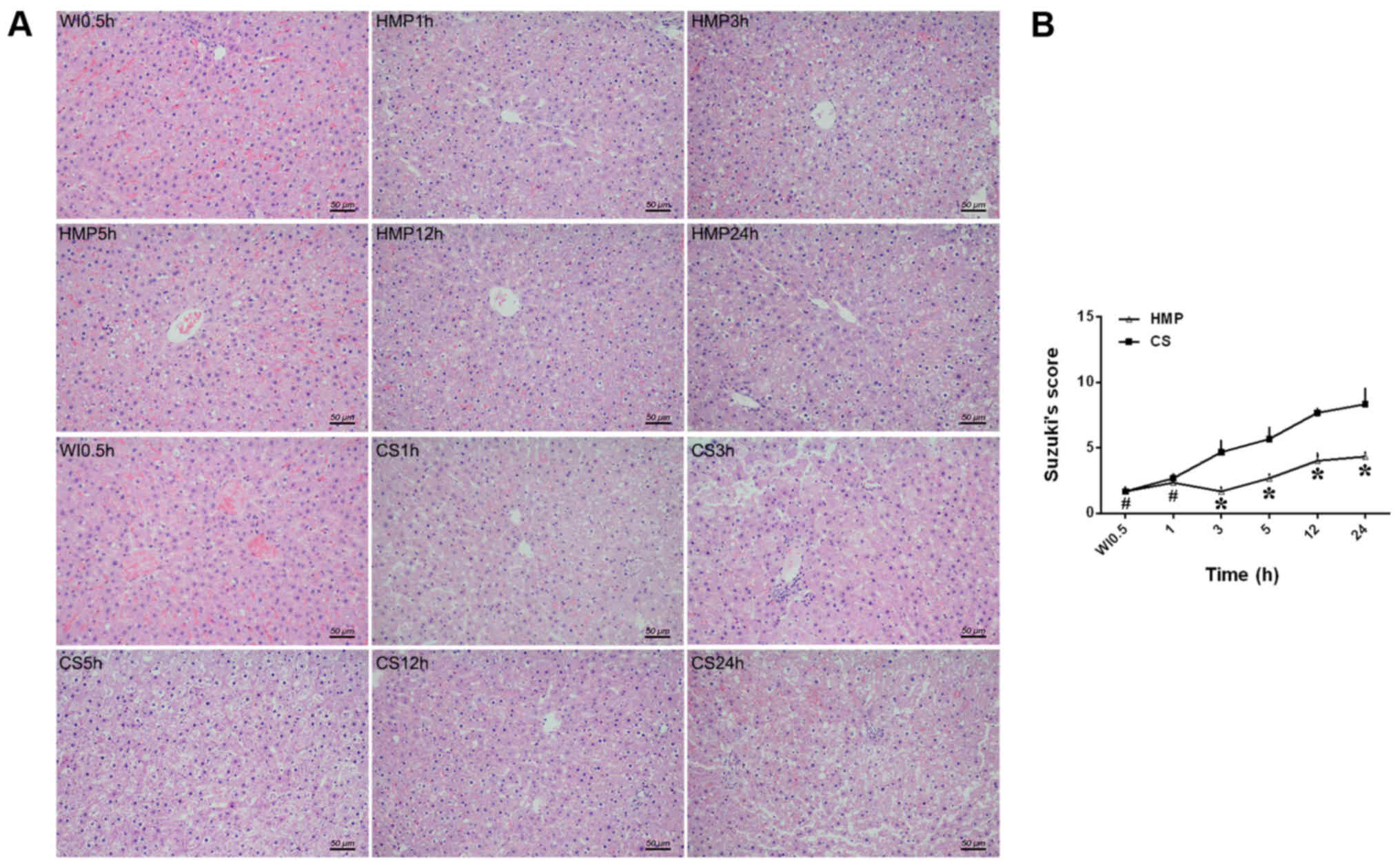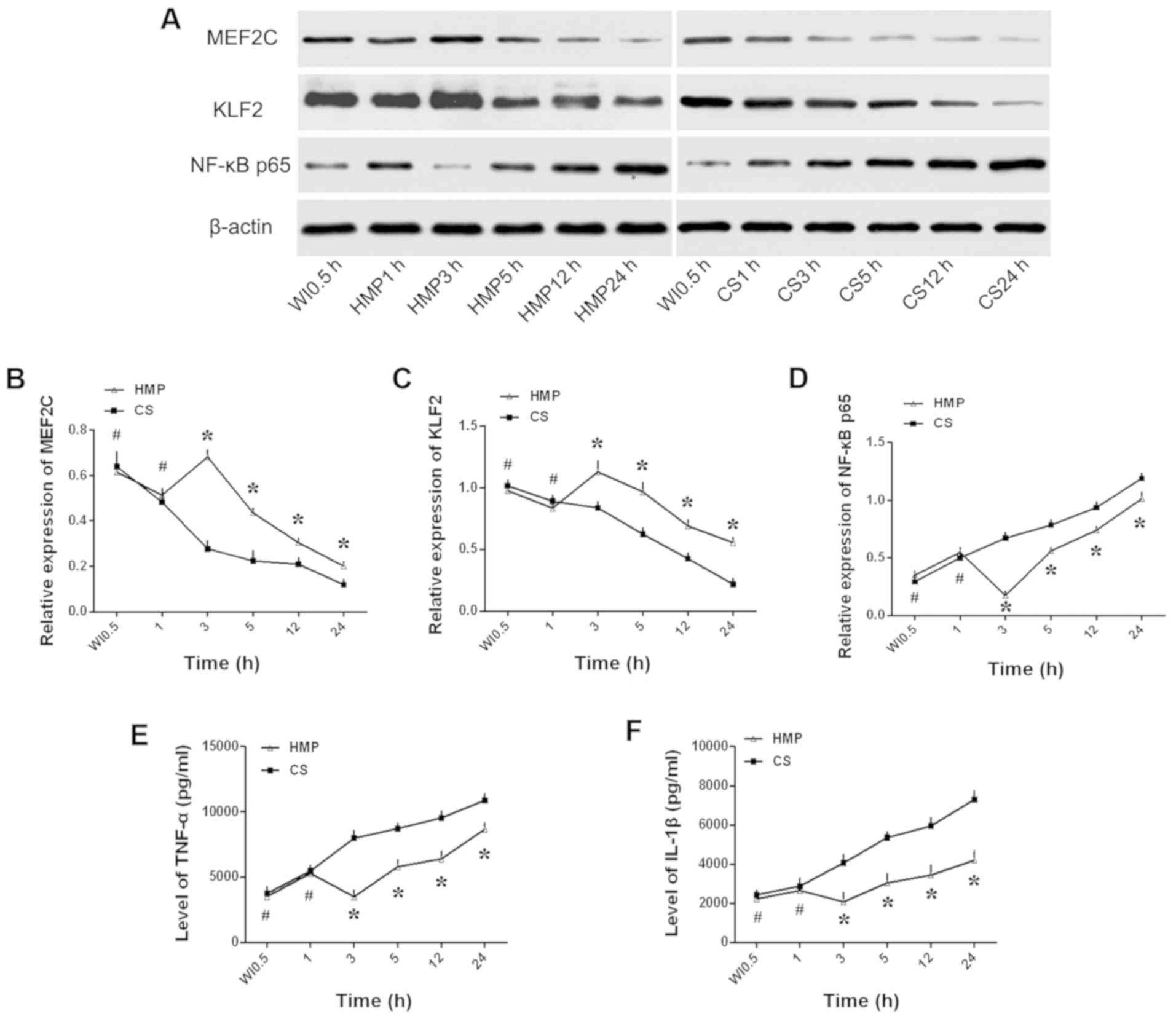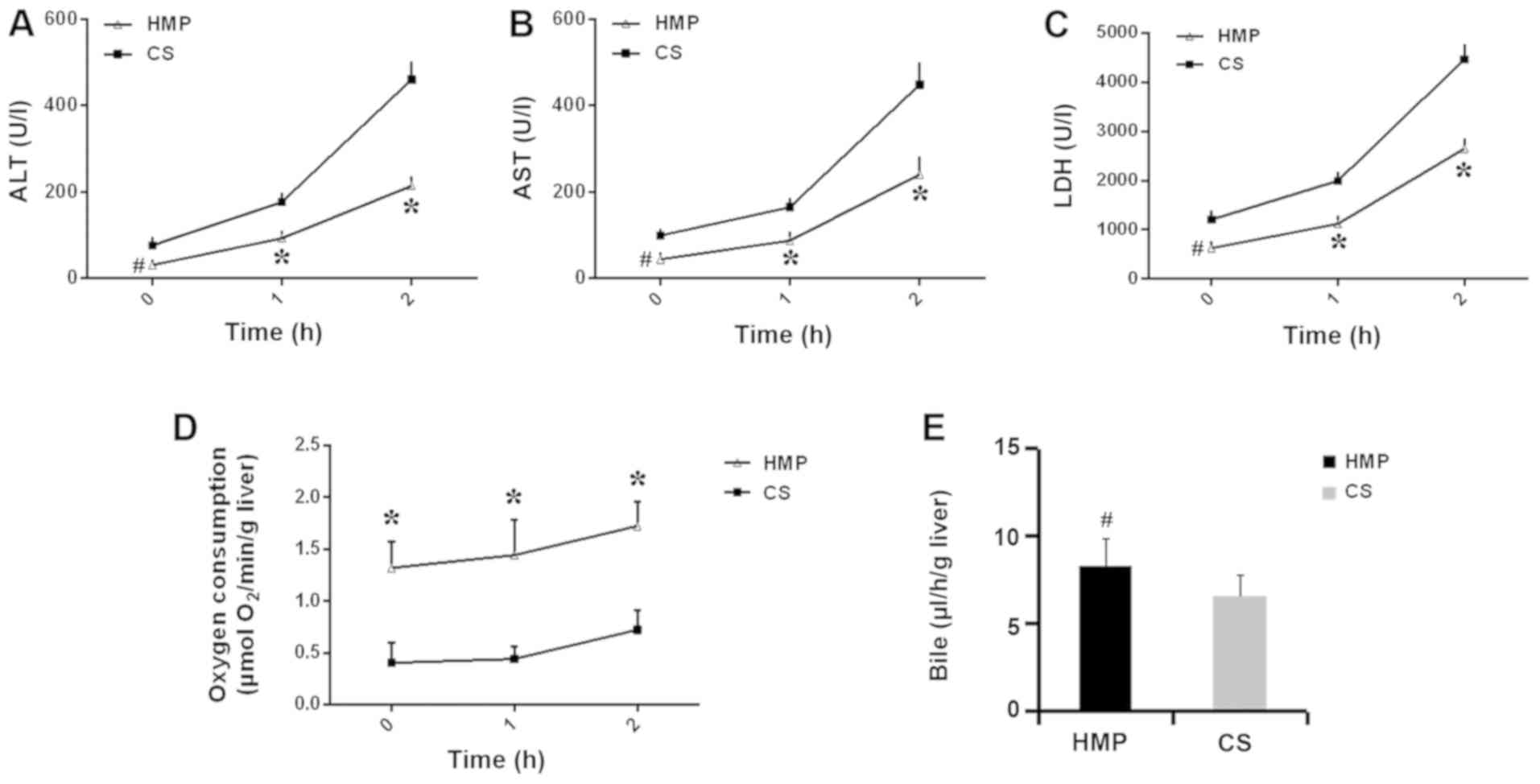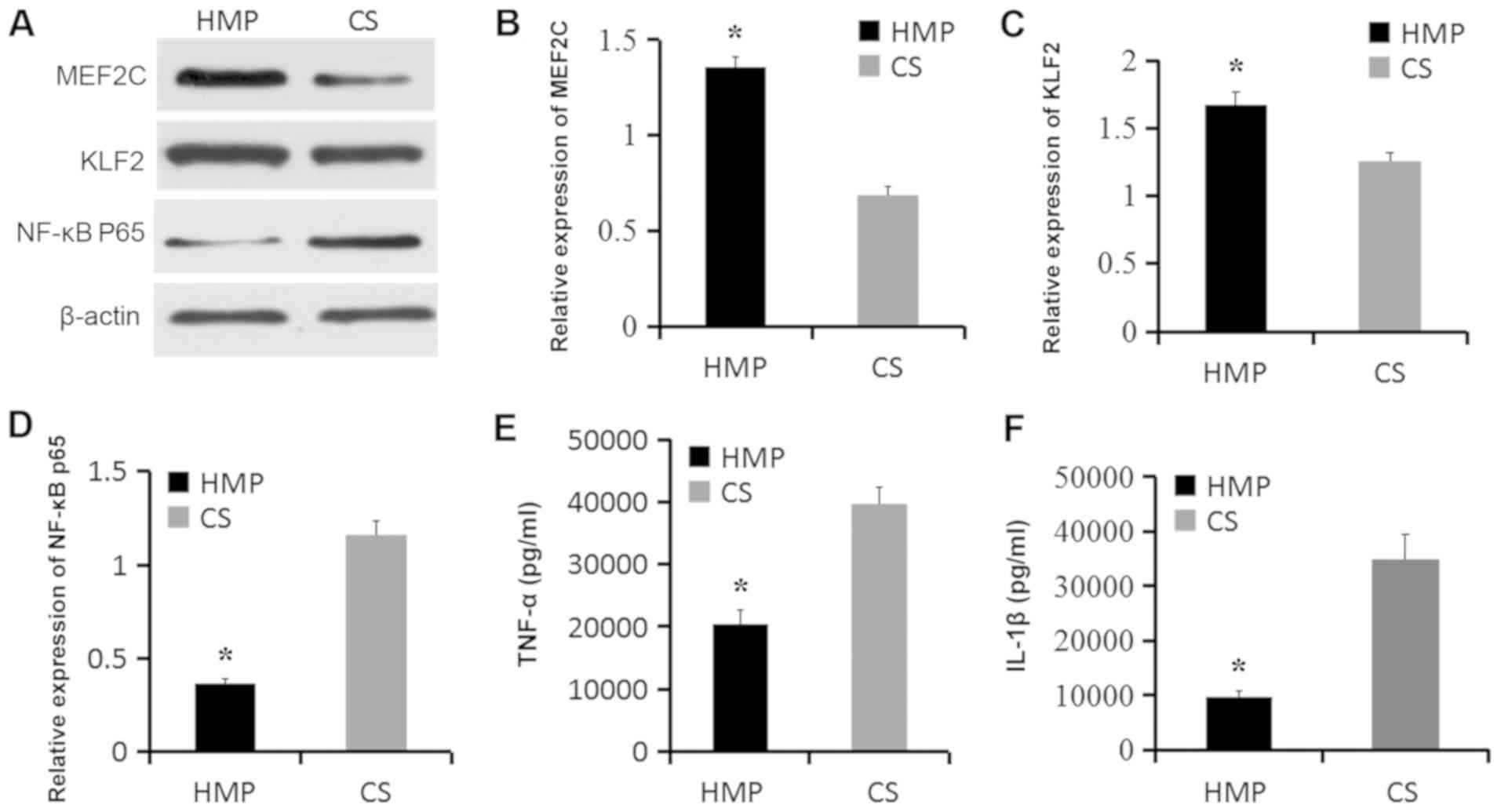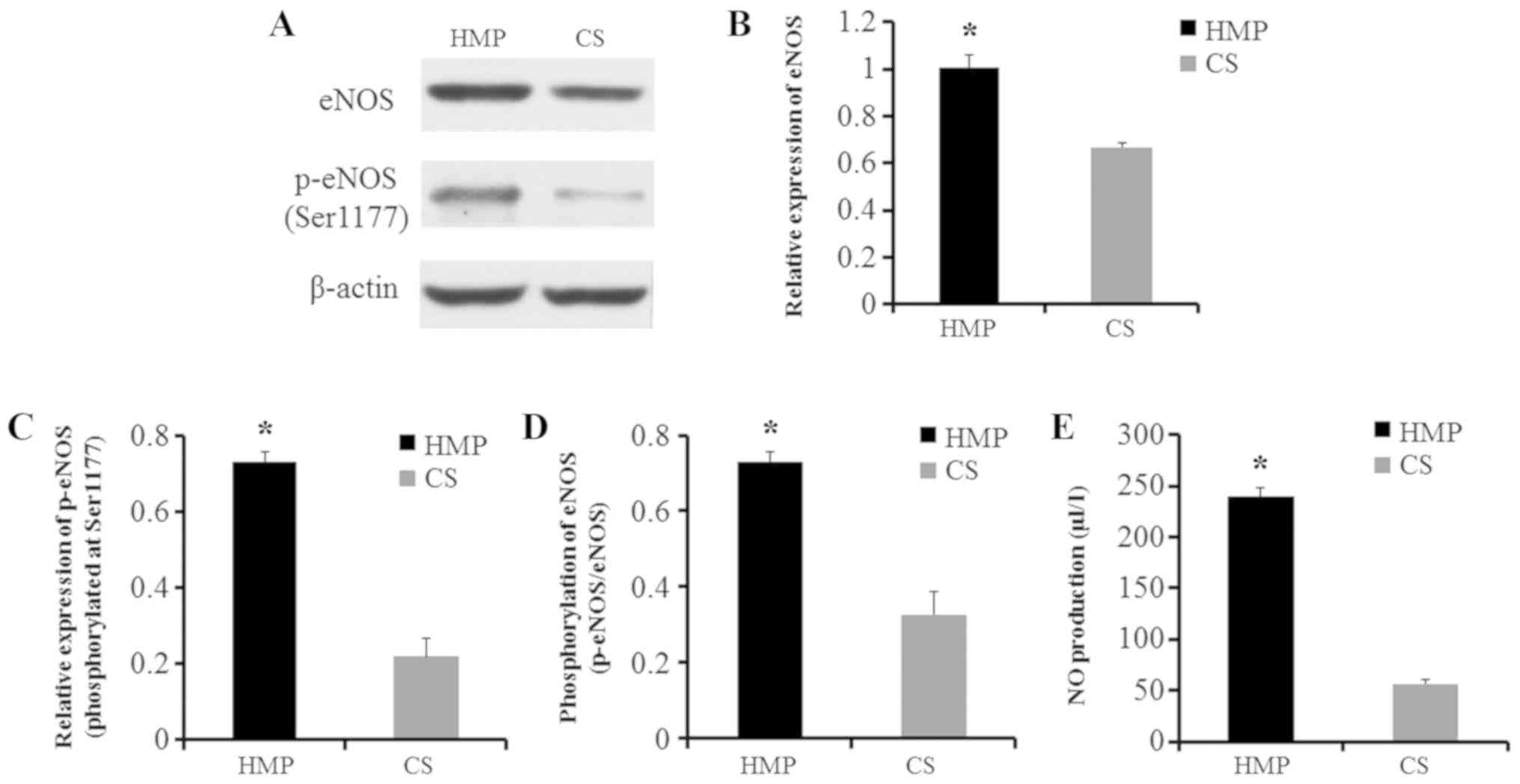|
1
|
Neuberger J: An update on liver
transplantation: A critical review. J Autoimmun. 66:51–59. 2016.
View Article : Google Scholar : PubMed/NCBI
|
|
2
|
Dar WA, Sullivan E, Bynon JS, Eltzschig H
and Ju C: Ischaemia reperfusion injury in liver transplantation:
Cellular and molecular mechanisms. Liver Int. 2019.39(5): 788–801.
View Article : Google Scholar : PubMed/NCBI
|
|
3
|
Eltzschig HK and Eckle T: Ischemia and
reperfusion - from mechanism to translation. Nat Med. 17:1391–1401.
2011. View
Article : Google Scholar : PubMed/NCBI
|
|
4
|
Zhai Y, Petrowsky H, Hong JC, Busuttil RW
and Kupiec-Weglinski JW: Ischaemia-reperfusion injury in liver
transplantation - from bench to bedside. Nat Rev Gastroenterol
Hepatol. 10:79–89. 2013. View Article : Google Scholar : PubMed/NCBI
|
|
5
|
Dengu F, Abbas SH, Ebeling G and Nasralla
D: Normothermic machine perfusion (NMP) of the liver as a platform
for therapeutic interventions during ex-vivo liver preservation: A
Review. J Clin Med. 9:E10462020. View Article : Google Scholar : PubMed/NCBI
|
|
6
|
Xue S, He W, Zeng X, Tang Z, Feng S, Zhong
Z, Xiong Y, Wang Y and Ye Q: Hypothermic machine perfusion
attenuates ischemia/reperfusion injury against rat livers donated
after cardiac death by activating the Keap1/Nrf2 ARE signaling
pathway. Mol Med Rep. 18:815–826. 2018.PubMed/NCBI
|
|
7
|
Guarrera JV, Henry SD, Samstein B, Reznik
E, Musat C, Lukose TI, Ratner LE, Brown RS Jr, Kato T and Emond JC:
Hypothermic machine preservation facilitates successful
transplantation of ‘orphan’ extended criteria donor livers. Am J
Transplant. 15:161–169. 2015. View Article : Google Scholar : PubMed/NCBI
|
|
8
|
Guarrera JV, Henry SD, Samstein B,
Odeh-Ramadan R, Kinkhabwala M, Goldstein MJ, Ratner LE, Renz JF,
Lee HT, Brown RS Jr, et al: Hypothermic machine preservation in
human liver transplantation: The first clinical series. Am J
Transplant. 10:372–381. 2010. View Article : Google Scholar : PubMed/NCBI
|
|
9
|
Monbaliu D, Liu Q, Libbrecht L, De Vos R,
Vekemans K, Debbaut C, Detry O, Roskams T, van Pelt J and Pirenne
J: Preserving the morphology and evaluating the quality of liver
grafts by hypothermic machine perfusion: A proof-of-concept study
using discarded human livers. Liver Transpl. 18:1495–1507. 2012.
View Article : Google Scholar : PubMed/NCBI
|
|
10
|
Zeng C, Hu X, He W, Wang Y, Li L, Xiong Y
and Ye Q: Hypothermic machine perfusion ameliorates inflammation
during ischemia reperfusion injury via sirtuin 1 mediated
deacetylation of nuclear factor κB p65 in rat livers donated after
circulatory death. Mol Med Rep. 16:8649–8656. 2017. View Article : Google Scholar : PubMed/NCBI
|
|
11
|
Lüer B, Fox M, Efferz P and Minor T:
Adding pulsatile vascular stimulation to venous systemic oxygen
persufflation of liver grafts. Artif Organs. 38:404–410. 2014.
View Article : Google Scholar : PubMed/NCBI
|
|
12
|
Doddaballapur A, Michalik KM, Manavski Y,
Lucas T, Houtkooper RH, You X, Chen W, Zeiher AM, Potente M,
Dimmeler S, et al: Laminar shear stress inhibits endothelial cell
metabolism via KLF2-mediated repression of PFKFB3. Arterioscler
Thromb Vasc Biol. 35:137–145. 2015. View Article : Google Scholar : PubMed/NCBI
|
|
13
|
Liu Z, Zhong Z, Lan J, Li M, Wang W, Yang
J, Tang C, Wang J, Ye S, Xiong Y, et al: Mechanisms of hypothermic
machine perfusion to decrease donation after cardiac death graft
inflammation: through the pathway of upregulating expression of
KLF2 and inhibiting TGF-β signaling. Artif Organs. 41:82–88. 2017.
View Article : Google Scholar : PubMed/NCBI
|
|
14
|
Hide D, Ortega-Ribera M, Garcia-Pagan JC,
Peralta C, Bosch J and Gracia-Sancho J: Effects of warm ischemia
and reperfusion on the liver microcirculatory phenotype of rats:
Underlying mechanisms and pharmacological therapy. Sci Rep.
6:221072016. View Article : Google Scholar : PubMed/NCBI
|
|
15
|
Nayak L, Lin Z and Jain MK: ‘Go with the
flow’: How Krüppel-like factor 2 regulates the vasoprotective
effects of shear stress. Antioxid Redox Signal. 15:1449–1461. 2011.
View Article : Google Scholar : PubMed/NCBI
|
|
16
|
Hayden MS and Ghosh S: Shared principles
in NF-kappaB signaling. Cell. 132:344–362. 2008. View Article : Google Scholar : PubMed/NCBI
|
|
17
|
Marrone G, Maeso-Díaz R, García-Cardena G,
Abraldes JG, García-Pagán JC, Bosch J and Gracia-Sancho J: KLF2
exerts antifibrotic and vasoprotective effects in cirrhotic rat
livers: Behind the molecular mechanisms of statins. Gut.
64:1434–1443. 2015. View Article : Google Scholar : PubMed/NCBI
|
|
18
|
Fledderus JO, van Thienen JV, Boon RA,
Dekker RJ, Rohlena J, Volger OL, Bijnens AP, Daemen MJ, Kuiper J,
van Berkel TJ, et al: Prolonged shear stress and KLF2 suppress
constitutive proinflammatory transcription through inhibition of
ATF2. Blood. 109:4249–4257. 2007. View Article : Google Scholar : PubMed/NCBI
|
|
19
|
Boon RA, Fledderus JO, Volger OL, van
Wanrooij EJ, Pardali E, Weesie F, Kuiper J, Pannekoek H, ten Dijke
P and Horrevoets AJ: KLF2 suppresses TGF-beta signaling in
endothelium through induction of Smad7 and inhibition of AP-1.
Arterioscler Thromb Vasc Biol. 27:532–539. 2007. View Article : Google Scholar : PubMed/NCBI
|
|
20
|
Das H, Kumar A, Lin Z, Patino WD, Hwang
PM, Feinberg MW, Majumder PK and Jain MK: Kruppel-like factor 2
(KLF2) regulates proinflammatory activation of monocytes. Proc Natl
Acad Sci USA. 103:6653–6658. 2006. View Article : Google Scholar : PubMed/NCBI
|
|
21
|
Wang W, Ha CH, Jhun BS, Wong C, Jain MK
and Jin ZG: Fluid shear stress stimulates phosphorylation-dependent
nuclear export of HDAC5 and mediates expression of KLF2 and eNOS.
Blood. 115:2971–2979. 2010. View Article : Google Scholar : PubMed/NCBI
|
|
22
|
Chu H, Li H, Guan X, Yan H, Zhang X, Cui
X, Li X and Cheng M: Resveratrol protects late endothelial
progenitor cells from TNF-α-induced inflammatory damage by
upregulating Krüppel-like factor-2. Mol Med Rep. 17:5708–5715.
2018.PubMed/NCBI
|
|
23
|
Erkens R, Suvorava T, Kramer CM, Diederich
LD, Kelm M and Cortese-Krott MM: Modulation of Local and Systemic
Heterocellular Communication by Mechanical Forces: A Role of
Endothelial Nitric Oxide Synthase. Antioxid Redox Signal.
26:917–935. 2017. View Article : Google Scholar : PubMed/NCBI
|
|
24
|
Fleming I: Molecular mechanisms underlying
the activation of eNOS. Pflugers Arch. 459:793–806. 2010.
View Article : Google Scholar : PubMed/NCBI
|
|
25
|
Liu Z, Zhang X, Xiao Q, Ye S, Lai CH, Luo
J, Huang X, Wang W, Zeng C, Zhong Z, et al: Pretreatment Donors
after Circulatory Death with Simvastatin Alleviates Liver Ischemia
Reperfusion Injury through a KLF2-Dependent Mechanism in Rat. Oxid
Med Cell Longev. 2017:38619142017. View Article : Google Scholar : PubMed/NCBI
|
|
26
|
National Research Council (US) Committee
for the Update of the Guide for the Care and Use of Laboratory
Animals, . Guide for the Care and Use of Laboratory Animals. (8th).
National Academies Press (US). (Washington, DC). 2011.
|
|
27
|
Schlegel A, Kron P, Graf R, Dutkowski P
and Clavien PA: Warm vs. cold perfusion techniques to rescue rodent
liver grafts. J Hepatol. 61:1267–1275. 2014. View Article : Google Scholar : PubMed/NCBI
|
|
28
|
Kamada N and Calne RY: A surgical
experience with five hundred thirty liver transplants in the rat.
Surgery. 93:64–69. 1983.PubMed/NCBI
|
|
29
|
Minor T, Manekeller S, Sioutis M and
Dombrowski F: Endoplasmic and vascular surface activation during
organ preservation: Refining upon the benefits of machine
perfusion. Am J Transplant. 6:1355–1366. 2006. View Article : Google Scholar : PubMed/NCBI
|
|
30
|
Pizarro MD, Rodriguez JV, Mamprin ME,
Fuller BJ, Mann BE, Motterlini R and Guibert EE: Protective effects
of a carbon monoxide-releasing molecule (CORM-3) during hepatic
cold preservation. Cryobiology. 58:248–255. 2009. View Article : Google Scholar : PubMed/NCBI
|
|
31
|
Balaban CL, Rodriguez JV and Guibert EE:
Delivery of the bioactive gas hydrogen sulfide during cold
preservation of rat liver: Effects on hepatic function in an ex
vivo model. Artif Organs. 35:508–515. 2011. View Article : Google Scholar : PubMed/NCBI
|
|
32
|
Suzuki S, Toledo-Pereyra LH, Rodriguez FJ
and Cejalvo D: Neutrophil infiltration as an important factor in
liver ischemia and reperfusion injury. Modulating effects of FK506
and cyclosporine. Transplantation. 55:1265–1272. 1993. View Article : Google Scholar : PubMed/NCBI
|
|
33
|
Jha P and Das H: KLF2 in regulation of
NF-κB-mediated immune cell function and inflammation. Int J Mol
Sci. 18:E23832017. View Article : Google Scholar : PubMed/NCBI
|
|
34
|
Weissenbacher A, Vrakas G, Nasralla D and
Ceresa CDL: The future of organ perfusion and re-conditioning.
Transpl Int. 32:586–597. 2019.PubMed/NCBI
|
|
35
|
Schlegel A and Dutkowski P: Role of
hypothermic machine perfusion in liver transplantation. Transpl
Int. 28:677–689. 2015. View Article : Google Scholar : PubMed/NCBI
|
|
36
|
Op den Dries S, Sutton ME, Karimian N, de
Boer MT, Wiersema-Buist J, Gouw AS, Leuvenink HG, Lisman T and
Porte RJ: Hypothermic oxygenated machine perfusion prevents
arteriolonecrosis of the peribiliary plexus in pig livers donated
after circulatory death. PLoS One. 9:e885212014. View Article : Google Scholar : PubMed/NCBI
|
|
37
|
Niu N, Xu S, Xu Y, Little PJ and Jin ZG:
Targeting Mechanosensitive Transcription Factors in
Atherosclerosis. Trends Pharmacol Sci. 40:253–266. 2019. View Article : Google Scholar : PubMed/NCBI
|
|
38
|
McKinsey TA, Zhang CL and Olson EN: MEF2:
A calcium-dependent regulator of cell division, differentiation and
death. Trends Biochem Sci. 27:40–47. 2002. View Article : Google Scholar : PubMed/NCBI
|
|
39
|
Potthoff MJ and Olson EN: MEF2: A central
regulator of diverse developmental programs. Development.
134:4131–4140. 2007. View Article : Google Scholar : PubMed/NCBI
|
|
40
|
Xu Z, Yoshida T, Wu L, Maiti D, Cebotaru L
and Duh EJ: Transcription factor MEF2C suppresses endothelial cell
inflammation via regulation of NF-κB and KLF2. J Cell Physiol.
230:1310–1320. 2015. View Article : Google Scholar : PubMed/NCBI
|
|
41
|
Lu YW, Lowery AM, Sun LY, Singer HA, Dai
G, Adam AP, Vincent PA and Schwarz JJ: Endothelial Myocyte Enhancer
Factor 2c Inhibits Migration of Smooth Muscle Cells Through
Fenestrations in the Internal Elastic Lamina. Arterioscler Thromb
Vasc Biol. 37:1380–1390. 2017. View Article : Google Scholar : PubMed/NCBI
|
|
42
|
Parmar KM, Nambudiri V, Dai G, Larman HB,
Gimbrone MA Jr and García-Cardeña G: Statins exert endothelial
atheroprotective effects via the KLF2 transcription factor. J Biol
Chem. 280:26714–26719. 2005. View Article : Google Scholar : PubMed/NCBI
|
|
43
|
Li Z, Nickkholgh A, Yi X, Bruns H, Gross
ML, Hoffmann K, Mohr E, Zorn M, Büchler MW and Schemmer P:
Melatonin protects kidney grafts from ischemia/reperfusion injury
through inhibition of NF-kB and apoptosis after experimental kidney
transplantation. J Pineal Res. 46:365–372. 2009. View Article : Google Scholar : PubMed/NCBI
|
|
44
|
Zhang J, Xia J, Zhang Y, Xiao F, Wang J,
Gao H, Liu Y, Rong S, Yao Y, Xu G, et al: HMGB1-TLR4 signaling
participates in renal ischemia reperfusion injury and could be
attenuated by dexamethasone-mediated inhibition of the ERK/NF-κB
pathway. Am J Transl Res. 8:4054–4067. 2016.PubMed/NCBI
|
|
45
|
Carnevale ME, Balaban CL, Guibert EE,
Bottai H and Rodriguez JV: Hypothermic machine perfusion versus
cold storage in the rescuing of livers from non-heart-beating donor
rats. Artif Organs. 37:985–991. 2013. View Article : Google Scholar : PubMed/NCBI
|
|
46
|
Ajamieh H, Farrell GC, McCuskey RS, Yu J,
Chu E, Wong HJ, Lam W and Teoh NC: Acute atorvastatin is
hepatoprotective against ischaemia-reperfusion injury in mice by
modulating eNOS and microparticle formation. Liver Int.
35:2174–2186. 2015. View Article : Google Scholar : PubMed/NCBI
|















